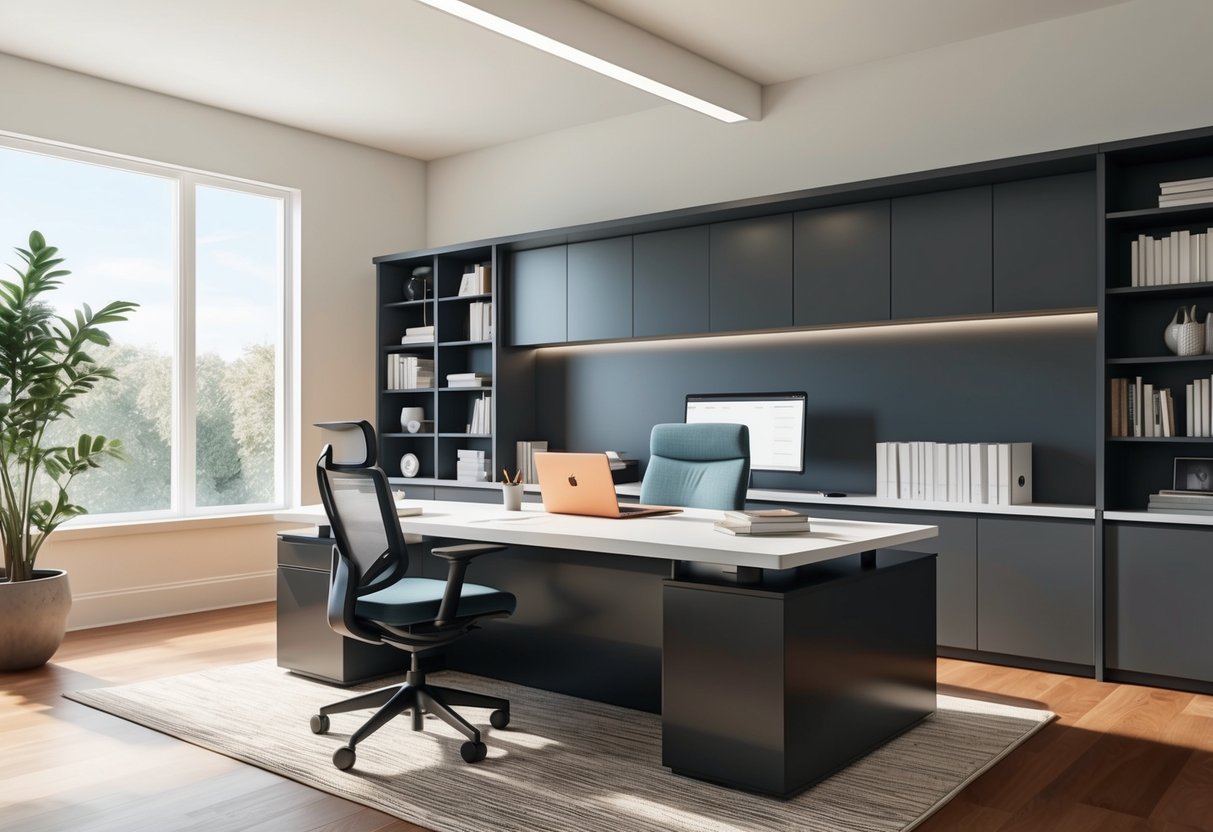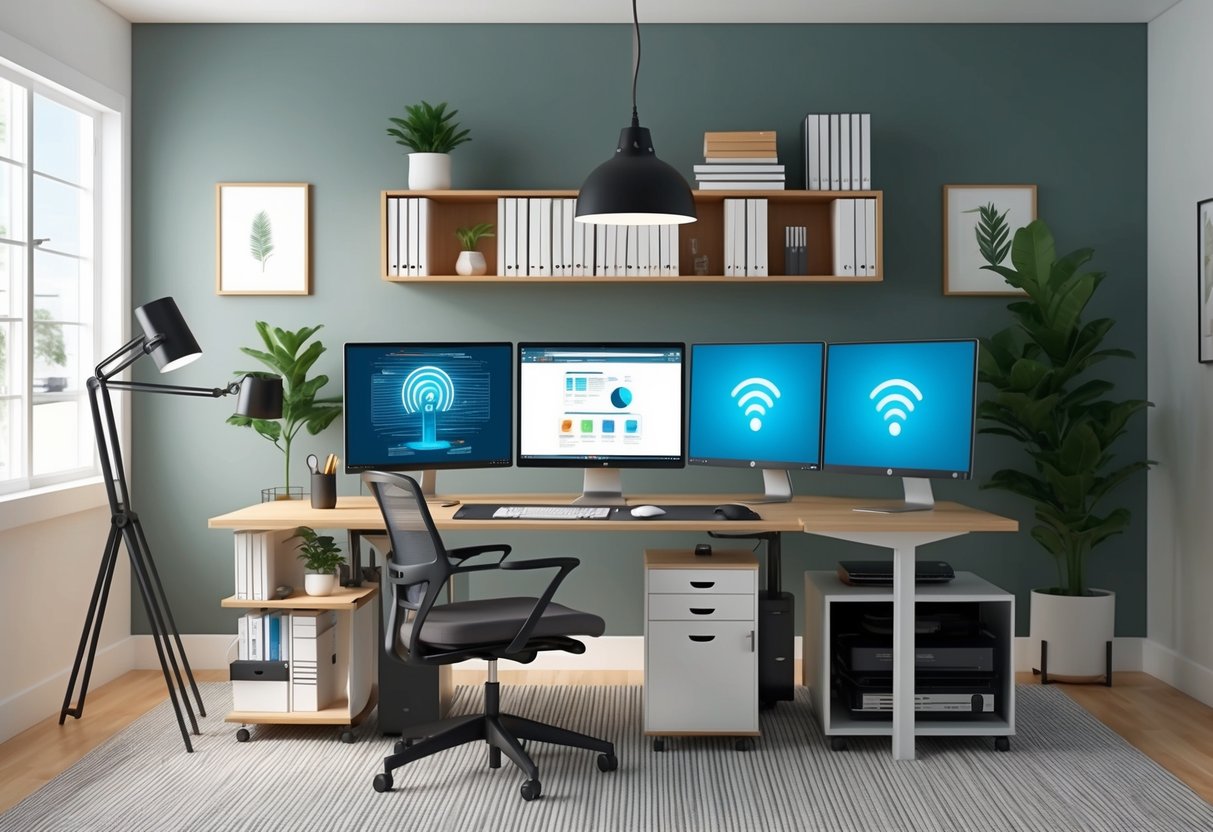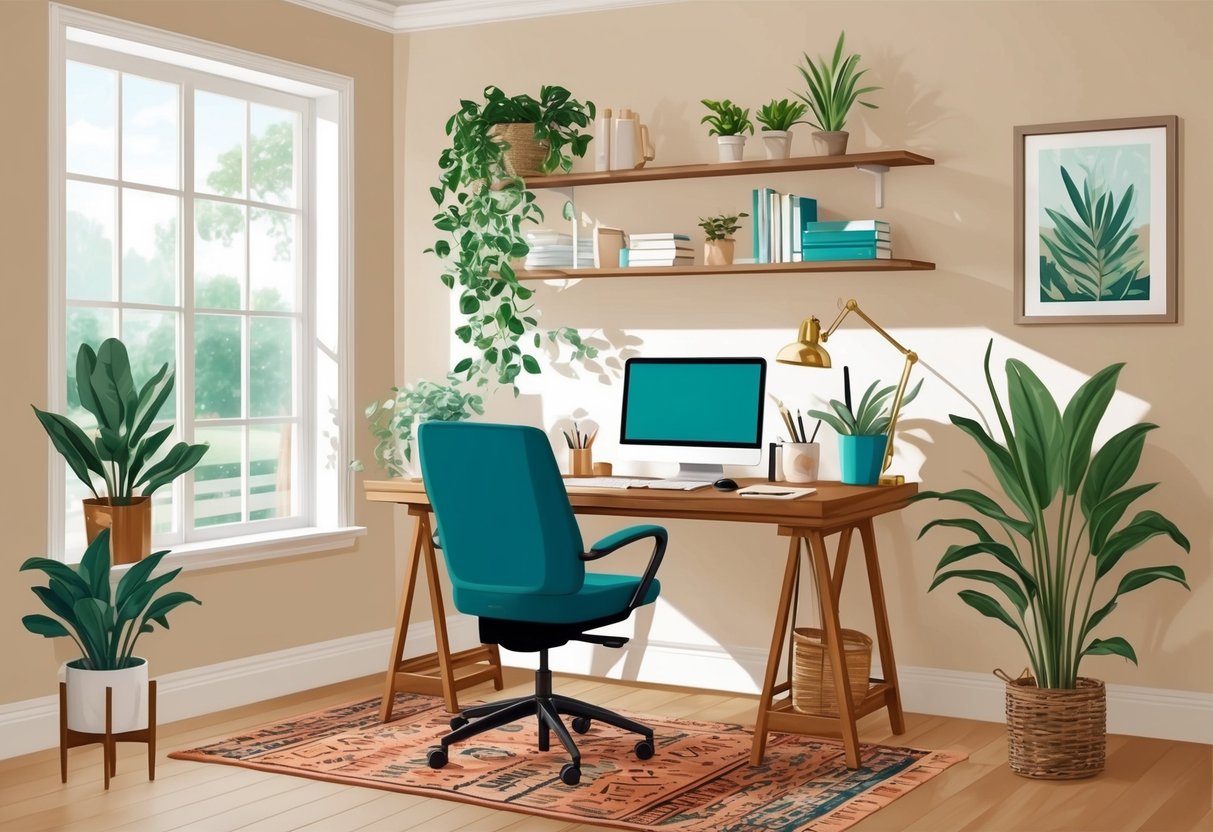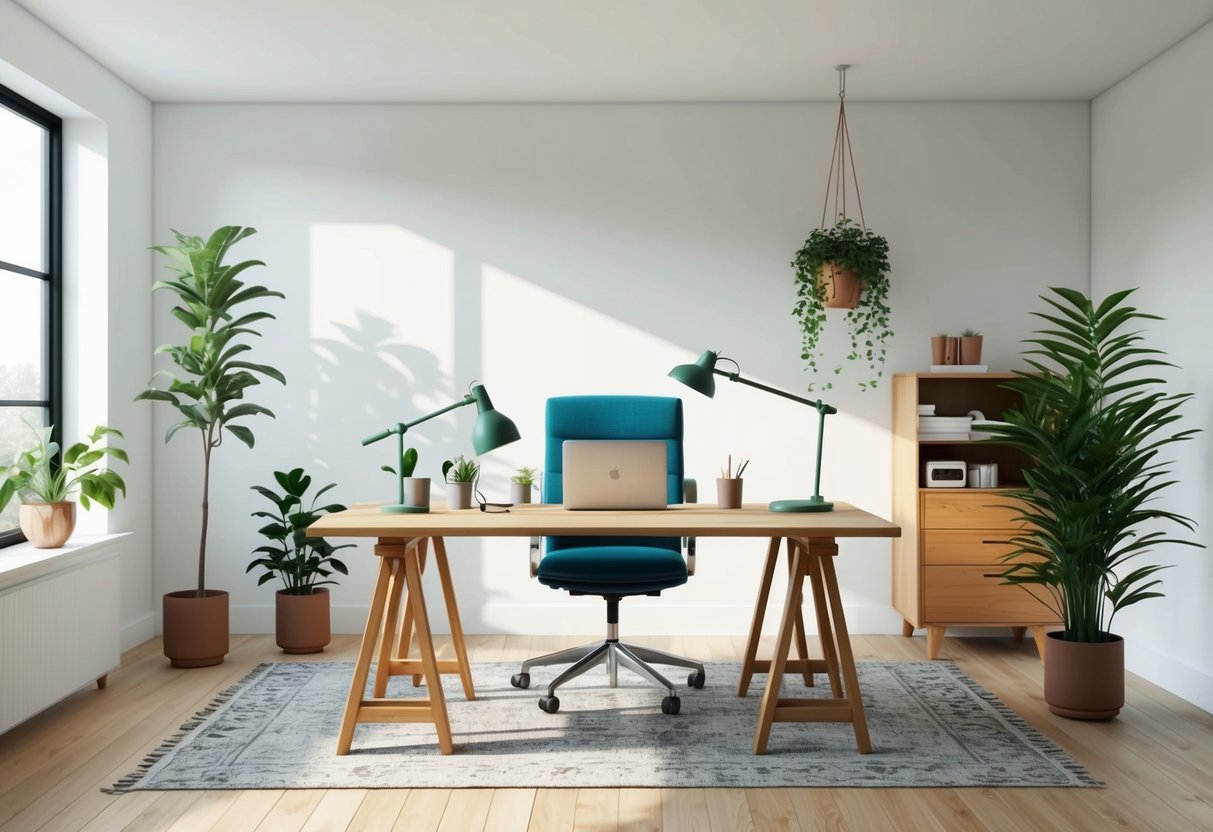
Ensuring Technology and Internet Readiness

A reliable technology setup is crucial for maintaining workflow, minimizing distractions, and ensuring seamless video meetings. High-speed internet and efficient devices support effective remote work and reduce unnecessary stress.
High-Speed Internet Connection
A stable, high-speed internet connection is fundamental for anyone working from home. Slow or unreliable internet can derail productivity, cause interruptions during video calls, and delay file uploads or downloads.
Fiber optic or cable connections are generally recommended for consistent speeds. Users should check their internet plan to ensure upload and download speeds meet the demands of video conferencing, cloud-based applications, and large data transfers.
For those sharing the connection with others, consider upgrading speed tiers to avoid bandwidth bottlenecks. A wired Ethernet cable can offer more stable connectivity than Wi-Fi, especially for remote work tasks that involve regular conference calls or large file transfers.
For improved Wi-Fi coverage, signal boosters or mesh networks can help eliminate dead zones in the home office area. Tools such as fast.com allow users to test their current internet speed and determine if an upgrade is needed.
Consistent high-speed internet supports productive home office design and helps reduce frustration.
Essential Tech Devices
A well-equipped home office requires more than just a computer and monitor. Reliable devices are critical for seamless workflow, including a laptop or desktop with enough processing power for daily tasks and virtual meetings.
Dual monitors can improve productivity by allowing users to multitask or cross-reference documents without switching screens. A high-quality webcam and a noise-canceling microphone or headset are important for clear virtual communication.
Many professionals choose external keyboards and ergonomic mice to reduce strain and improve comfort during long work sessions. Printers, scanners, and backup storage devices may also be necessary, depending on job requirements.
Surge protectors and an uninterruptible power supply (UPS) provide essential protection against power outages or surges, helping to safeguard valuable data and equipment. Properly chosen tech devices are key to productive and efficient remote work.
Fostering Work-Life Balance and Focus

Creating a workspace that encourages work-life balance requires thoughtful physical and organizational strategies. Small changes such as managing shared spaces and visual privacy can significantly boost productivity and minimize distractions during the day.
Setting Boundaries with Family Command Center
A family command center can help reduce interruptions by establishing clear boundaries between work and home life, especially for those working in shared or open spaces. This designated area acts as an organized hub for family schedules, messages, and essential information.
A well-designed family command center includes a combination of:
- Wall-mounted calendars for daily schedules
- Bulletin or whiteboards for notes and reminders
- Mail baskets and supply holders for paperwork or essentials
By centralizing information, everyone in the household knows where to look for updates or handle tasks without entering the workspace. To learn more about making a workspace both comfortable and structured, see these work-from-home office ideas for comfort and productivity.
Using Privacy Screens
Privacy screens are one of the most effective ways to visually separate a home office from the rest of the living area, especially in small apartments or multipurpose rooms. These screens can be movable partitions, folding panels, or even tall bookshelves that shield the work area without requiring permanent alterations.
The key benefits of privacy screens include minimizing visual noise and distractions and signaling to others that work is in progress. They also create a sense of enclosure that helps the brain switch into “work mode.”
Opt for materials that complement the room’s style but are opaque enough to provide real separation. With minimal installation, privacy screens are an easy investment for anyone who needs focused space to boost productivity and maintain healthy work-life boundaries.
Sustainable and Eco-Friendly Home Office Ideas

Eco-friendly home office design can improve focus, comfort, and productivity. Sustainability in workspace design can be achieved with mindful materials, renewable resources, and energy-saving strategies.
Sustainable Furniture Choices
Opting for furniture made from certified sustainable wood, bamboo, or reclaimed materials supports resource conservation. Many eco-conscious brands now offer desks and chairs built from FSC-certified wood, recycled metals, or responsibly sourced bamboo, minimizing environmental impact.
Ergonomic seating is essential for productivity, so look for options with non-toxic upholstery or cushions filled with organic materials. Modular or multi-functional pieces help reduce the number of furnishings needed and promote efficient use of space.
Key features to consider include recyclable or biodegradable materials, low-emission finishes and adhesives, and timeless design for durability. People can also explore local artisans or vintage shops to find unique, upcycled pieces with character, reducing the footprint from manufacturing and shipping.
Learn more about designing a space that inspires and motivates without sacrificing environmental responsibility at this guide on home office sustainability and design.
Energy-Efficient Lighting
Proper lighting is crucial for productivity and reducing eye strain. Choose LED bulbs or energy-saving fixtures that consume less power and have a longer lifespan than traditional incandescent bulbs.
Workspaces should be arranged to maximize natural daylight with windows, skylights, or glass doors when possible. Natural light reduces dependence on artificial sources and enhances mood and alertness.
Integrate dimmers and smart lighting controls to adjust brightness throughout the day, improving energy efficiency. Task lighting, such as LED desk lamps, ensures focused illumination only where needed.
For more ways to incorporate eco-friendly improvements, see eco-friendly office lighting practices.
Recycled and Upcycled Decor
Decorating with items made from recycled glass, metal, or plastics lowers resource use and reduces waste. Upcycled accessories such as planters made from old jars, bulletin boards from cork remnants, or storage boxes crafted from repurposed wood create a personal, sustainable touch.
Incorporating plant-based decor—such as succulents, moss walls, or bamboo organizers—introduces natural elements that purify air and increase well-being. Consider using artwork or office accessories created by local or fair-trade artisans that emphasize sustainability and creativity.
Decor ideas:
- Reclaimed wood shelves
- Vintage rugs or curtains
- Recycled paper organizers
- Refillable glass containers
For more creative tips on sustainable décor, explore eco-friendly home office ideas.